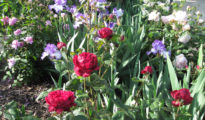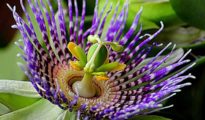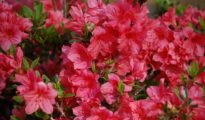Wildflowers are a beautiful, low-maintenance addition to any garden. But did you know that they also provide a number of other benefits? In this blog post, we'll explore some of the reasons why you should consider planting wildflowers in your garden. Keep reading to learn how to grow wildflowers in your garden as well as the amazing benefits of wildflowers.

The Benefits of Planting Wildflowers
Butterflies and Bees Love Wildflowers
Wildflowers are a great source of food for bees and butterflies. In fact, many species of bees and butterflies rely on wildflowers for their survival. By planting wildflowers in your garden, you can help support these important pollinators.
Wildflowers Are Low-Maintenance
Another great reason to plant wildflowers is that they are low-maintenance. Once they're established, they don't require much care or attention. This makes them perfect for busy gardeners or those who don't have a lot of time to devote to their gardens.
Wildflowers Add Color and Beauty to Your Garden
Of course, one of the most obvious reasons to plant wildflowers is that they add color and beauty to your garden. Wildflowers come in a wide variety of colors, so you're sure to find a combination that you love. They're also relatively easy to grow, so even if you're not a experienced gardener, you can still enjoy a beautiful display of wildflowers in your garden.
How to Grow Wildflowers
- Pick the right spot. Wildflowers need full sun and well-drained soil. If your yard doesn't get at least six hours of direct sunlight per day, you'll need to choose another location.
- Prepare the soil. Wildflowers grow best in sandy soil that has been amended with compost. If your soil is heavy clay, you can improve drainage by adding sand. To prepare the soil, loosen it with a spade or tiller to a depth of about eight inches. Then, mix in two inches of compost and two inches of sand.
- Choose your seeds. There are many varieties of wildflower seeds available, so take some time to research which ones will do best in your area and what time of year they should be planted. You can find seed packets at your local nursery or online.
- Sow the seeds. Wildflower seeds are tiny, so they should be scattered on the surface of the soil rather than buried deep underground. To ensure even coverage, mix the seeds with sand before scattering them. Then, lightly rake the area to help them adhere to the ground. Water well.
- Wait for germination. It can take up to two weeks for wildflower seeds to germinate, so be patient! Once they've sprouted, thin out the seedlings so that only the strongest plants remain. Continue to water regularly until the plants are established.
How Long Does it Take for Wildflowers to Grow?
How long does it take for wildflowers to grow? The answer depends on the type of wildflower you are growing. Some wildflowers, such as annuals, only live for one growing season. Others, such as biennials, take two years to complete their life cycle. And still others, such as perennials, can live for many years.
Annuals:
Annuals complete their life cycle in one growing season. This means that they sprout from seed, flower, produce seed, and die all within the span of a few months. Annuals are often used as “cover crops,” meaning that they are grown to cover the ground and prevent erosion. Once they've completed their life cycle, they are plowed under and provide nutrients for the next crop.
Biennials:
Biennials also sprout from seed and flower, but they take two years to complete their life cycle. In their first year of growth, biennials only produce leaves. Then, in their second year of growth, they produce flowers and seeds before dying. Biennials are often used as ornamental plants in gardens because they add color and interest even in their first year of growth.
Perennials:
Perennials can live for many years if they are given the right conditions (such as water and sunlight). They sprout from seed, flower, produce seed, and then enter a dormancy period before emerging again the following year to repeat the cycle. Because they can live for many years, perennials are often used as foundation plants in gardens—plants that provide structure and interest even when other plants are not in bloom.


















